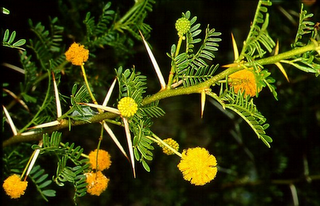"I'm queen of my own compost heap & I'm getting used to the smell!"
Don’t throw away materials when you can use them to improve your lawn and garden! Start composting instead! I find it highly satisfying having a separate bin in the kitchen for egg shells, potato peels, tea bags and other food waste. This gets emptied on top of my compost heap every morning and three times a week all the leaf litter and grass cuttings from the garden is added. I bought a couple of tins of (live) earthworms from a fishing tackle shop and, besides adding them directly to my garden, have also put some into the compost heap and I've been surprised at how they have multiplied!
Compost is the end product of a complex feeding pattern involving hundreds of different organisms, including bacteria, fungi, worms, and insects. What remains after these organisms break down the organic materials is the rich, earthy substance your garden will love. Composting replicates nature’s natural system of breaking down materials on the forest floor. In every forest, grassland, jungle, and garden, plants die, fall to the ground, and decay. They are slowly dismantled by the small organisms living in the soil. Eventually these plant parts disappear into the brown crumbly forest floor. This humus keeps the soil light and fluffy. I therefore hardly ever clean up leaf litter from within my flower beds and though some might not like the look of such an "untidy" garden, I also enjoy watching the Thrushes scratching around in the leaves, enjoying the insects and snails hiding underneath.

This work is deeply simple. All you need is a shady piece of ground large enough for a compost pile that is at least 1×1x2m. First you fork open the soil beneath your proposed pile and arrange a base made of old plant stalks, stems, and soft woody debris. Next you mound on top of this base a deep layer of green, nitrogen-rich materials like garden weeds and grass clippings, mixed with animal manure and kitchen scraps.
The following layer is dry, carbonaceous material like straw and old leaves, or wood chips and sawdust, all well watered so that your pile is nice and moist. Continue to layer your compost green material and then let dry until you have a tall, noble pile, as high as you can reach.
Every compost pile is alive, teeming with billions of invisible micro-organisms digesting your autumn mountain of garbage. In a few short days a healthy compost pile begins to steam with metabolic life as clouds of heat-loving bacteria break down raw protein and complex carbohydrates into amino acids and simple sugars, generating temperatures as high as 72ºC.
This breakdown stage is followed a few weeks later by a build-up stage that lasts for more than a month as complex fungal networks absorb the pile’s free gases into their web work of mycelia, reducing leaching of nutrients, disarming pollutants and disease pathogens, and physically binding soil and compost together, creating stable aggregates that increase water infiltration and retention.
In the last stage of decomposition a few months later—or sooner, if you turn your pile—your mound will be alive with sweet, woodsy-smelling compost laced with up to one hundred industrious compost insects per square foot, intertwined with writhing red compost worms testifying by their presence that decomposition is complete.
Compost MaterialsAlmost any organic material is suitable for a compost pile. The pile needs a proper ratio of carbon-rich materials, or “browns,” and nitrogen-rich materials, or “greens.” Among the brown materials are dried leaves, straw, and wood chips. Nitrogen materials are fresh or green, such as grass clippings and kitchen scraps.
FoodThe 50/50 Rule: A perfect mixture of material consists of brown (carbon-based material) and green (nitrogen-based) material by weight.
AirTo Turn or Not to Turn: The organisms that live inside your compost bin need air to survive. Mix or turn the pile three to five times per season using a pitchfork, garden hoe or shovel. Proper aeration can make a big difference. You will know if your bin is not getting enough oxygen if the pile smells of ammonia.
WaterMoist, Not Damp: The organisms need water to survive, but not too much or they will drown. The ideal moisture level of your compost pile should be like that of a wrung out sponge.
Surface AreaSmall is Best: Cut up or shred organic waste materials before placing them into the compost bin. This increases the surface area and speeds up decomposition. You can also store your kitchen scraps in your freezer to speed up decomposition, as your materials break down at the cell level when frozen.
When it comes to
WHAT NOT TO COMPOST, the best is to use your common sense. Obvious items like chemically-treated wood products, diseased plants, human and pet waste and MEAT, BONES, AND FATTY FOOD WASTES are big no-no's, as is plastic in any form, tins and glass. Keep it natural and you can't go wrong.
And remember:
"A good compost pile should get hot enough to poach an egg, but not so hot it would cook a lobster!".


















